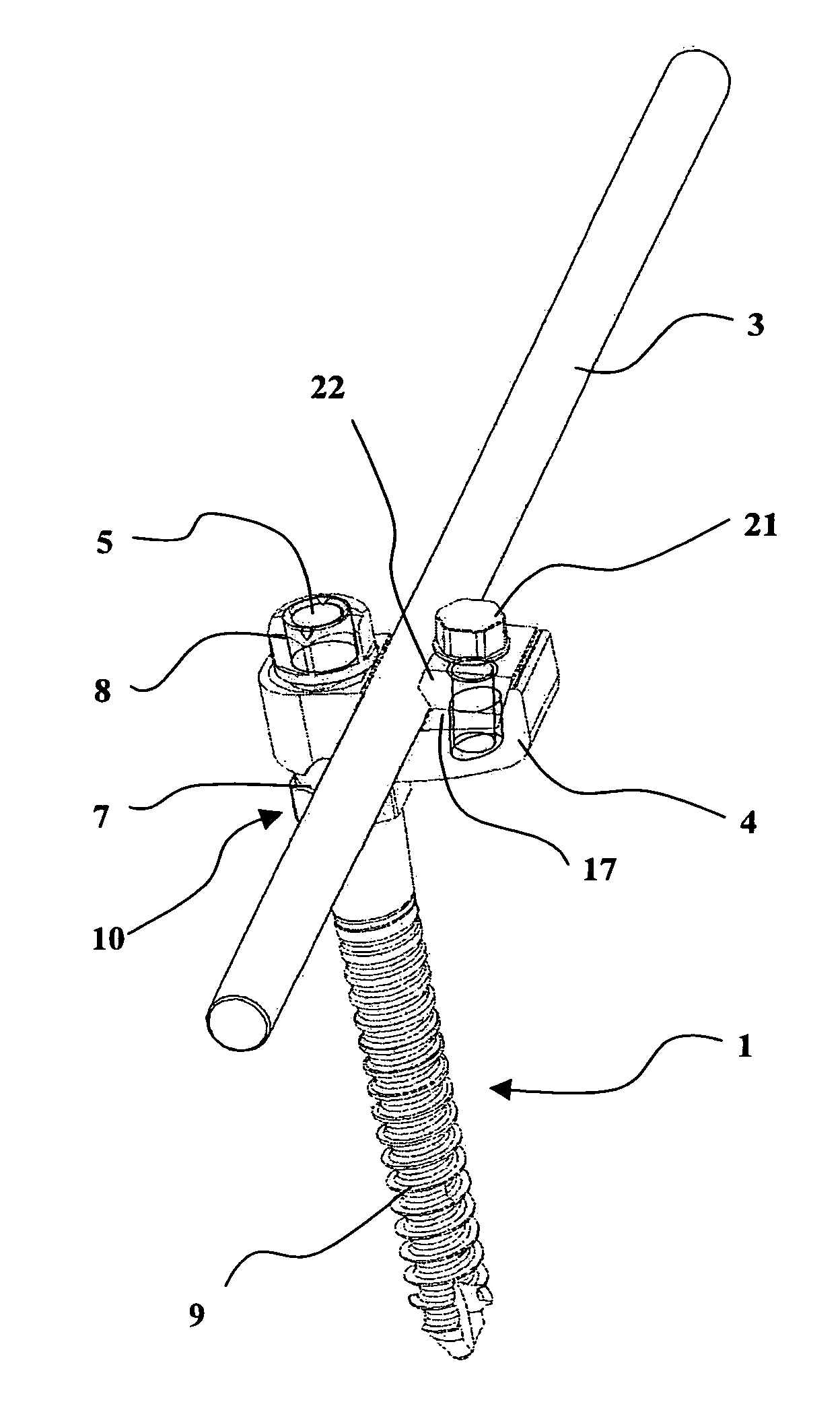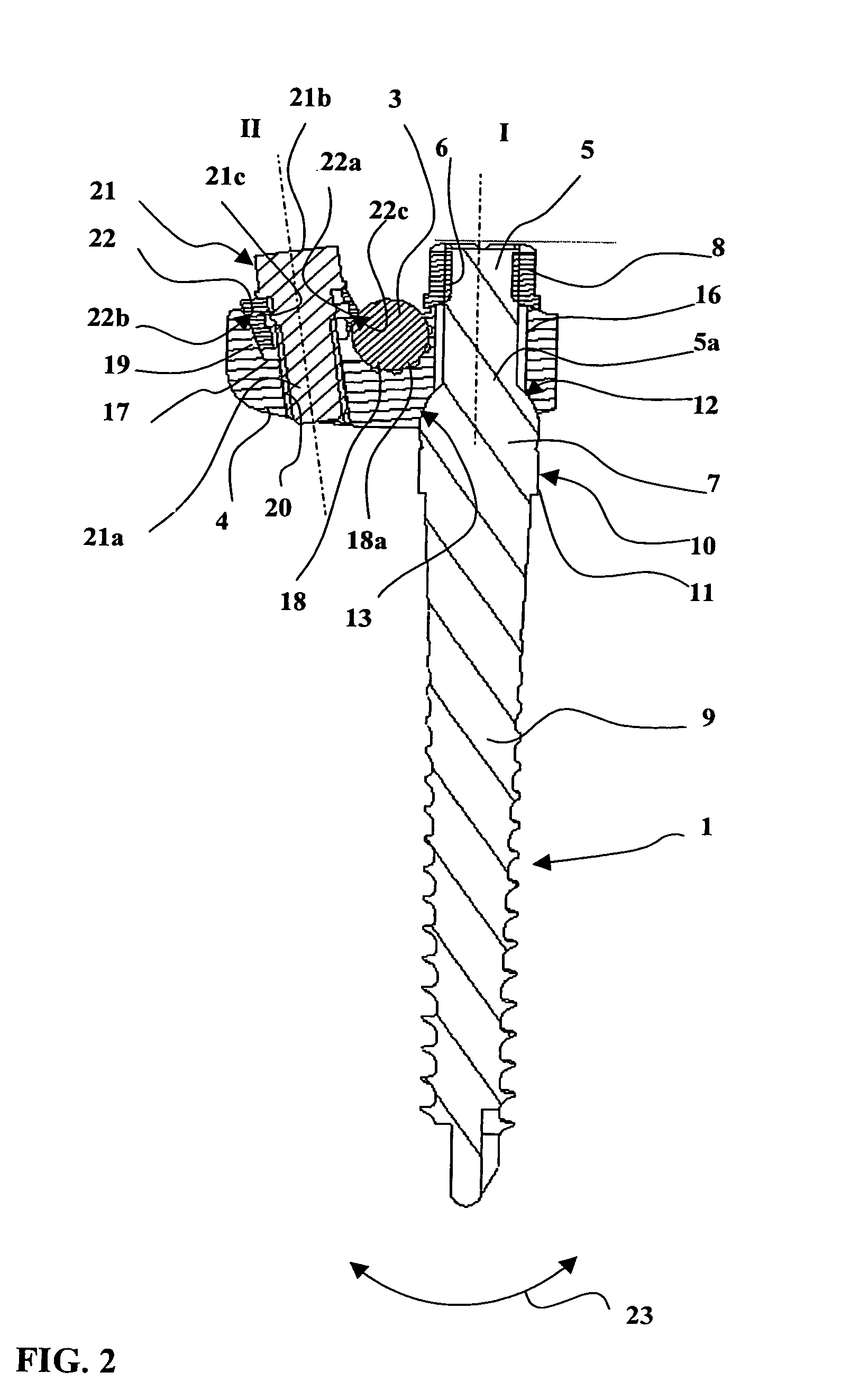Vertebral column support device which is assembled by means of clamping
a technology of supporting device and vertebrae, which is applied in the field of supporting device for vertebrae, can solve the problems of major risk of sliding member slipping and rotating on the securing rod, and the above device is not suitable for three-dimensional reduction of the upper portion of the spine, and achieves the effect of convenient fitting of the component parts
- Summary
- Abstract
- Description
- Claims
- Application Information
AI Technical Summary
Benefits of technology
Problems solved by technology
Method used
Image
Examples
Embodiment Construction
[0029]The device represented in the drawings comprises anchor members such as bone screws 1 (FIGS. 1 and 2) or hooks 2 (FIG. 3), securing rods 3, and sliding connecting members 4 between each anchor member and the securing rod 3.
[0030]The securing rods 3 of the device according to the invention are smooth circular section rods. The material and the section are selected to obtain optimum elasticity, matched to the forces to be encountered in use, and so that the rod can be curved to the required shape of the vertebral column portion to be treated.
[0031]Each anchor member, bone screw 1, hook 2 or bearing plate, is in one piece with a screwthreaded cylindrical portion 5 having an exterior screwthread 6, and comprises a stop flange 7 delimiting the screwing of a clamping nut 8 onto the exterior screwthread 6.
[0032]In the embodiment shown in FIGS. 1 and 2, the anchor member is a twin-thread bone screw 1, the cylindrical screwthreaded portion 5 with the exterior screwthread 6 constituting...
PUM
 Login to View More
Login to View More Abstract
Description
Claims
Application Information
 Login to View More
Login to View More - R&D
- Intellectual Property
- Life Sciences
- Materials
- Tech Scout
- Unparalleled Data Quality
- Higher Quality Content
- 60% Fewer Hallucinations
Browse by: Latest US Patents, China's latest patents, Technical Efficacy Thesaurus, Application Domain, Technology Topic, Popular Technical Reports.
© 2025 PatSnap. All rights reserved.Legal|Privacy policy|Modern Slavery Act Transparency Statement|Sitemap|About US| Contact US: help@patsnap.com



